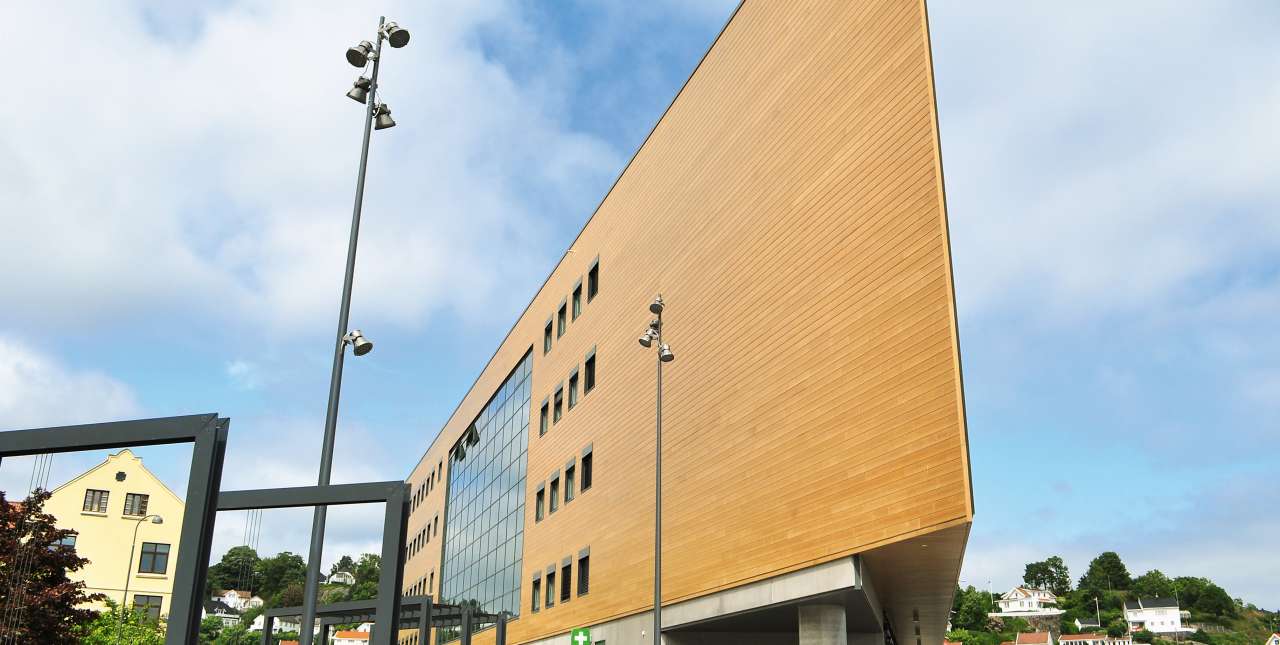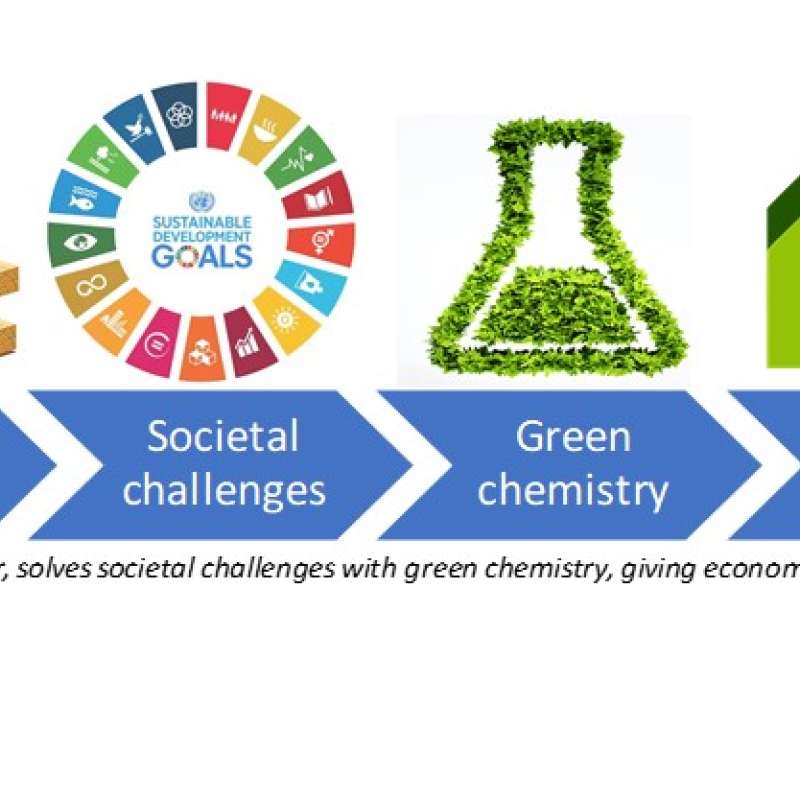
Protection of wood products for outside applications
Wood is degradable, and as such a temporary state in the eternal cycle of elements and solar energy. Our activities include building models for predicting wood service life, DNA-tracing microbiologically induced wood deterioration, improving surface appearance, and extending durability or otherwise modifying wood properties for certain uses.

Publications
Abstract
No abstract has been registered
Abstract
Acetylated wood is a durable and dimensionally stable product with many potential applications in exterior timber structures. Research has shown that acetylated wood can be effectively bonded by various adhesive types. However, one of the most commonly used adhesives for timber constructions, melamine urea formaldehyde (MUF), shows poor performance in combination with acetylated wood in delamination tests based on cyclic wetting and drying. The hydrophobic acetylated wood surface leads to reduced adhesion due to poorer adhesive wetting and fewer chemical bonds between the resin and the wood polymers. The use of a resorcinol-formaldehyde (RF)-based primer on the acetylated wood surface prior to the application of MUF leads to positive gluing results with both acetylated radiata pine and beech, providing significantly improved resistance to delamination. Radial penetration of the primer and MUF in acetylated wood shows higher penetration compared with untreated wood. In addition, a phenol resorcinol-formaldehyde adhesive system showed high resistance against delamination and can be used for gluing of acetylated wood.
Abstract
No abstract has been registered
Authors
Andreas Treu Katrin Zimmer Christian Brischke Erik Larnøy Lone Ross Foued Aloui Simon M. Cragg Per-Otto Flæte Miha Humar Mats Westin Luisa Borges John WilliamsAbstract
Timber structures in marine applications are often exposed to severe degradation conditions caused by mechanical loads and wood-degrading organisms. This paper presents the use of timber in marine environments in Europe from a wood protection perspective. It discusses the use of wood in coastline protection and archeological marine wood, reviews the marine borer taxa in European waters, and gives an overview of potential solutions for protection of timber in marine environments. Information was compiled from the most relevant literature sources with an emphasis on new wood protection methods; the need for research and potential solutions are discussed. Traditionally, timber has been extensively utilized in a variety of marine applications. Although there is a strong need for developing new protection systems for timber in marine applications, the research in this field has been scarce for many years. New attempts to protect timber used in marine environments in Europe have mainly focused on wood modification and the use of mechanical barriers to prevent colonization of marine wood borers. The importance of understanding the mechanisms of settlement, migration, boring, and digestion of the degrading organisms is key for developing effective systems for protecting timber in marine environments.
Abstract
Surface mould growth contributes to the colour changes of outdoor exposed wood over time. Modelling mould growth can thus help visualize wooden facades’ colour development, which can improve facade design and service life. However, existing wood mould models do not consider transient wetting effects that occur outdoors due to precipitation and condensation. To address this, four mould models were evaluated using laboratory experimental data that included exposure to transient wetting. First, the models (the original and the updated VTT model, the biohygrothermal model and the mould resistance design (MRD) model) were evaluated for Scots pine sapwood. For this evaluation, the transient wetting effect was implemented in the models by using hourly wood surface relative humidity (RH), calculated from electrical resistance measurements, as input. This showed that the original and the updated VTT model gave best fit to the experimental data. However, further evaluation of these two models for more wood materials showed that the updated VTT model was sensitive to the choice of material parameters. Large discrepancies occurred when varying the material parameters in the updated VTT model. Finally, different estimates of RH were tested in the original VTT model. Using wood surface RH as input gave best fit to the experimental data, and ambient air RH gave poorest fit. Overall, the results indicate that the original VTT model is fairly reliable and can be used to predict mould growth on wooden claddings exposed to transient wetting as long as the wood surface climate is used as climatic input data.
Abstract
No abstract has been registered
Authors
Callum Aidan Stephen Hill Andrew Norton Janka DibdiakovaAbstract
More than sixty environmental product declarations of insulation materials (glass wool, mineral wool, expanded polystyrene, extruded polystyrene, polyurethane, foam glass and cellulose) have been examined and the published information for global warming potential (GWP) and for embodied energy (EE) has been analysed and is presented. A peer-review literature survey of the data for GWP and EE associated with the different insulation products is also included. The data for GWP (kg carbon dioxide equivalents) and EE (megajoules) is reported in terms of product mass or as a functional unit (FU) (1 m2 of insulation with R = 1 m2 K/W). Data for some classes of insulation material (such as glass wool) exhibit a relatively narrow range of values when reported in terms of weight of product or as a functional unit. Other classes of insulation material exhibit much wider distributions of values (e.g., expanded polystyrene). When reported per weight of product, the hydrocarbon-based insulation materials exhibit higher GWP and EE values compared to inorganic or cellulosic equivalents. However, when compared on an FU basis this distinction is no longer apparent and some of the cellulosic based materials (obtained by refining of wood chips) show some of the highest EE values. The relationship between the EE and GWP per kg of insulation product has also been determined as being 15.8 MJ per kg CO2 equivalents.
Authors
Matthew Schwarzkopf Michael Burnard Viacheslav Tverezovskiy Andreas Treu Miha Humar Andreja KutnarAbstract
No abstract has been registered
Abstract
No abstract has been registered
Authors
Lars G. F. Tellnes Christelle Ganne-Chedeville Ana Cláudia Dias Franz Dolezal Callum Aidan Stephen Hill Edwin Zea EscamillaAbstract
No abstract has been registered
Projects

Division of Forest and Forest Resources
Increased valorisation of domestic timber by a novel wood modification system
Sustainable forestry providing timber, solves societal challenges with green chemistry, giving economical growth through durable wood products

Division of Forest and Forest Resources
CLICKdesign delivering fingertip knowledge to enable service life performance specification of wood
Forskere og industri vil i CLICK
